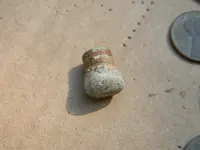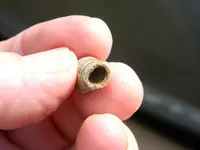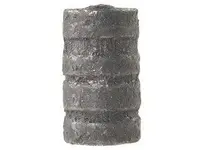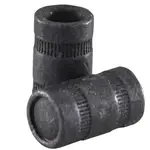In my opinion the bullet is too damaged to definitely identify. Its "smushed" front no longer tells us whether its nose was pointed, rounded, conical-flat-tip, or flat (like CharlieP.'s wadcutters). Also, its hollow base is significantly out-of-round, so its diameter cannot be accurately measured. For example, the reported base measurement of 11/32-inch equals .34375-inch, which does not match the diameter of a FIRED .32, .357, or .36-caliber bullet.
The three remaining ID-clues are:
1- Two "reeded" body grooves. That type of bullet body-groove first appears in the late-1870s, so this bullet cannot be from earlier than that. (Sidenote: I'd previously been saying "approximately" 1880, but I recently saw a box of reeded-groove .38 Smith & Wesson bullets professionally estimated to have been made in 1877, so I'm now saying late-1870s.)
2- Deep conical cavity in base. Not long after the civil war, the design of "most" bullets had shifted to either a solid base or having only a small and/or shallow base-cavity. So, except for CharlieP.'s 20th-Century wadcutters, I lean toward this bullet being pre-20th-Century.
3- Weight is reported to be 9 grams, which translates to approximately 139 grains. Based on that weight, and being mindful of the deep cavity in its base which reduces its weight in comparison to a solid-based one, I estimate it to be a .38-caliber bullet.







